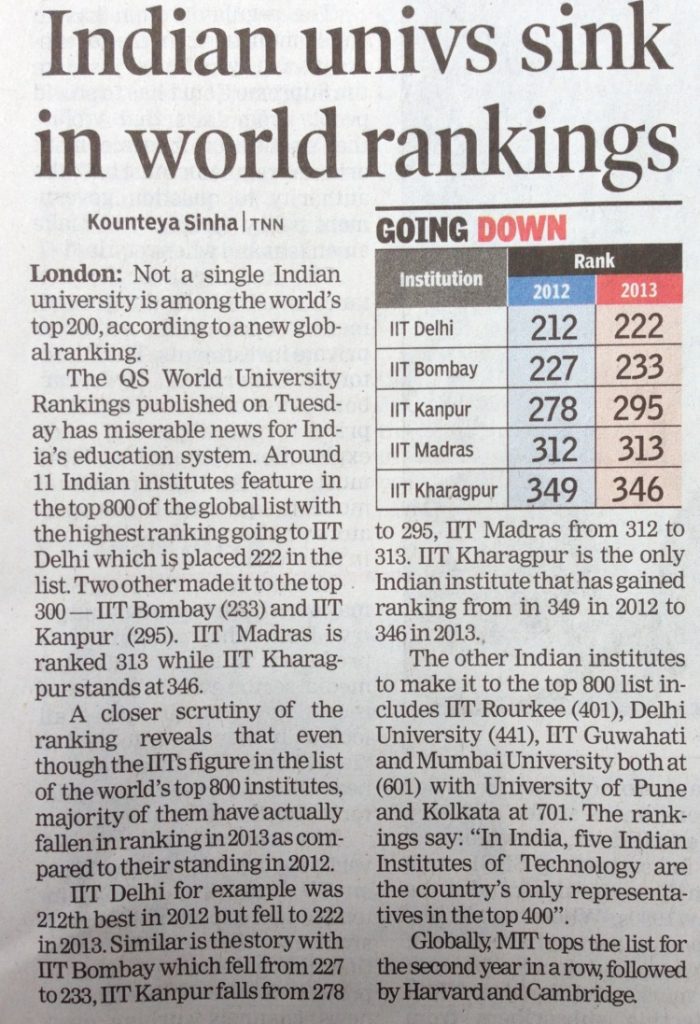Relevance: Mains: G.S paper II: Governance: Education
States need to focus as much on quality as quantity, says a recent report
When one thinks of the country’s growth, one must think of not just quantity, but also quality. One of the most crucial factors determining this qualitative — and inclusive — growth is public education. As many as 60 per cent of India’s children are dependent on public education, both at the elementary and secondary school levels, and therefore, closer scrutiny of this crucial aspect of education is required.
The organisations Child Rights and You (CRY) and Centre for Budget and Governance Accountability (CBGA) have done precisely this. Apart from resources for education, they have explicitly focused on learning outcomes and the services that should be ideally delivered to students.
In light of the 14th Financial Commission’s recommendations, there was need for in-depth consideration of the school education budget by States. CRY and CBGA used their individual expertise to study various facets of school education and recently released a report titled ‘Budgeting for School Education: What Has Changed and What Has Not’.
The study was carried out in six Indian States — Uttar Pradesh, West Bengal, Bihar, Chhattisgarh, Maharashtra, and Tamil Nadu — by putting under the microscope the Detailed Demands for Grants of state budgets in the period 2014-2015 to 2017-2018.
The report highlights two crucial pillars of school education — teachers and infrastructure. With regard to the issue of teachers, it identifies the shortage of professionally qualified teachers, both at the elementary and secondary level, as a great impediment to growth. Even after eight years of the implementation of the Right to Education Act, States are still lacking in this area.
And though salaries of the existing teachers account for a large proportion of the budget of the six States, their education departments have not corrected the shortage of professionally qualified teachers. In Chhattisgarh, for example, salaries account for 62 per cent of the budget, while in Maharashtra it is 82 per cent. Out of the 66.41 lakh teachers at the elementary level, the report points out that 11 lakh are still untrained.
This, however, is not the only issue impacting students and schools in the six States. Infrastructure is also severely wanting. Only 57.3 per cent of elementary schools have electricity, and in Bihar and Uttar Pradesh the figure is below 40 per cent. All this, in spite of these States increasing their share of budget expenditure on infrastructure. The report identifies a huge and continuing deficit ever since the implementation of the RTE and emphasises the urgent need for a technology-driven education system, which would help in improving learning efficiencies.
The report advocates widening of inclusive education, possible only with comprehensive need-based planning, budgeting, and monitoring. Achieving this goal involves active involvement of the community it impacts.
The report concludes that in spite of an increase in budgetary spending on school education, the funds provided to eradicate major pain areas such as lack of professionally trained teachers and quality-driven infrastructure are still very low.
Adequate public spending
As Priti Mahara, the Director of Policy Research and Advocacy at CRY puts it, “To ensure better school environment and quality learning outcomes, adequate public spending is vital…States should come together to considerably increase and sustain school education funds longer than usual to transform the current public education system”.
She further adds that, “a substantially improved process of planning, smoothening fund flows, addressing bottlenecks in the fund utilisation process, mutual coordination between centre and state and constant monitoring can help bridge the gaps between resource needs, budget allocation and actual spending”.


